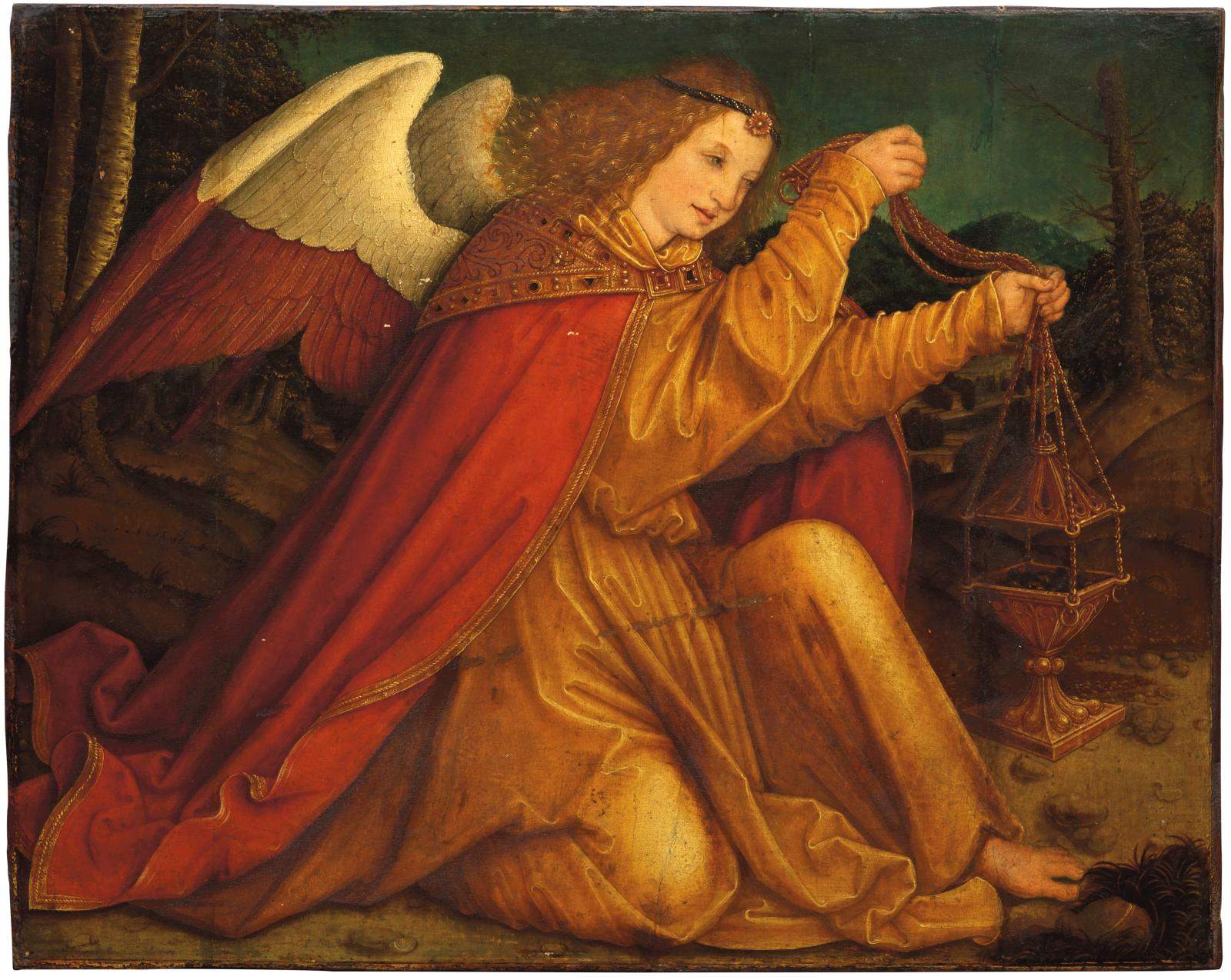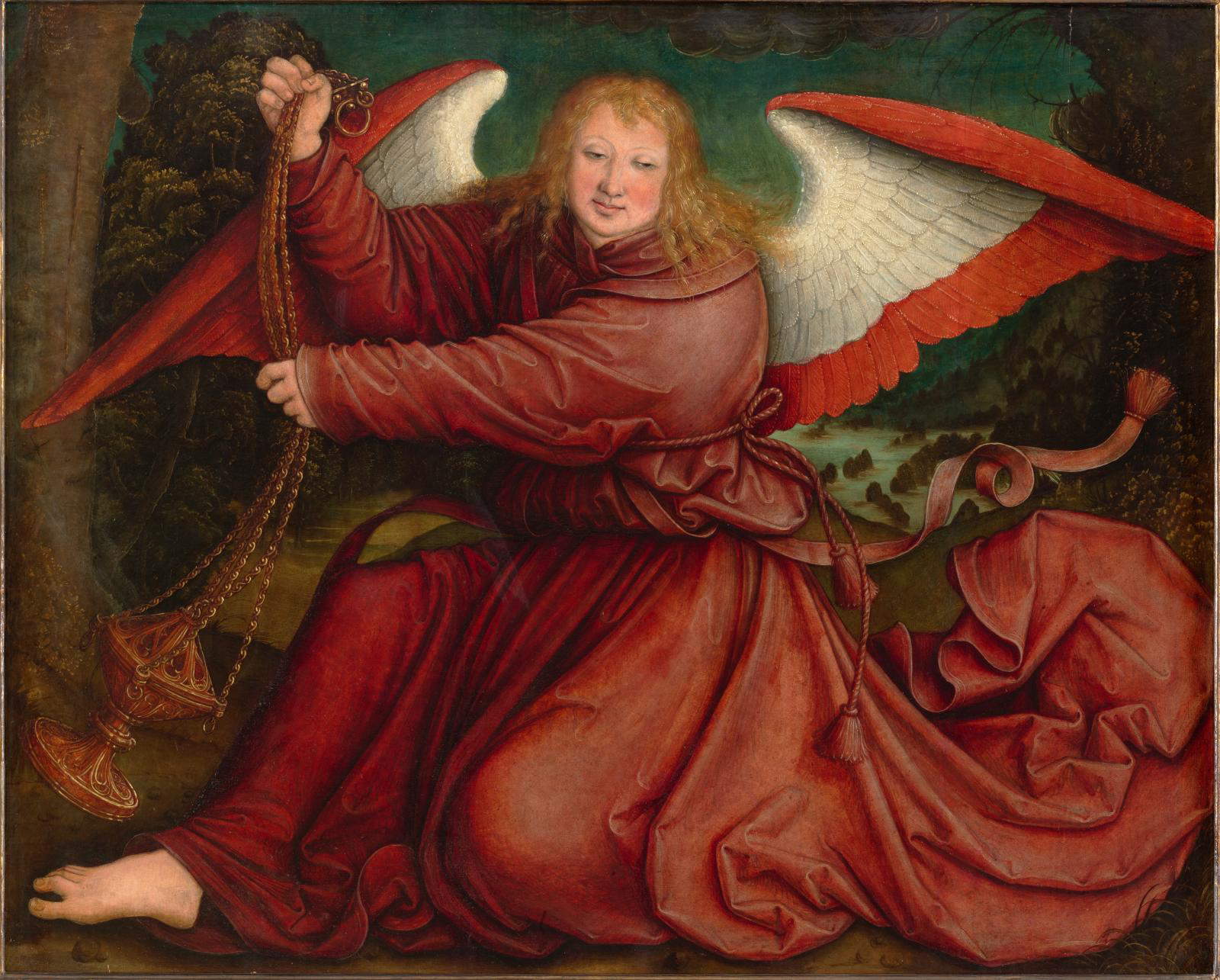Toulouse, a 16th-century German masterpiece for sale: Bernhard Strigel's Angel
A newly found important 16th-century German work will be sold Feb. 4 at the Artpaugée House in Toulouse, France. It is an Angel with thurible in yellow robe from 1520, a work from the last phase of the career of painter Bernhard Strigel (Memmingen, 1460/1461 - 1528). The estimate is 600,000 to 800,000 euros. This is an important work because of the high quality of the painting, the brilliant colors, and its character as a witness to the transition between late Gothic taste and Renaissance novelties, which occurred later in Germany than in Italy. In addition, the newly traced angel (its discovery dates back to July 2021, when the collector who decided to put it up for auction turned to Artpaugée for appraisal) is the pendant of a similar painting, of identical dimensions, which went to auction in 2009 by Drouot and was purchased by the Louvre for its Abu Dhabi location, at the sum of 1,082,970 euros. The Toulouse twin presents an almost identical composition.
Painted when Strigel was in his sixties, theAngel with thurible is influenced, according to Artpaugée experts, by knowledge of artists such as Albrecht Dürer, Hans Baldung, and Albrecht Altdorfer. These characters would be evident in the landscape of this angel, who is painted dressed in a yellow robe while holding an incense burner. Although a full reading is hindered by the deterioration of the paint, which is yellowed, the green and blue tones of the mountain or foliage, whose undulations are emphasized by golden dots, participate in the enigmatic and spiritual dimension of the scene. In the distance, surrounded by nature, and immediately below the angel’s hand, we also see some buildings, outlined in ways typical of German painting of the time.
The square-based thurible held by the angel is a very rare object. Professor Susanne Thürigen of the Germanisches Nationalmuseum in Nuremberg says there would be no other attestation of thurible with a square base, a reason that makes the painting further fascinating. “The angel clothed in a yellow tunic,” the sales catalog reads, “is wrapped in a long, broadly folded red mantle embellished with a shining golden reflection. Unbound by the frame, the angel occupies the entire space. He is framed by a landscape, symmetrically composed. To the right and left are the gnarled trees of the Black Forest, drawing vertical lines. They are in the upper register and invite the viewer into the image. Behind the Angel, a path winds through a wooded, hilly area with a mountain range in the background. The landscape is fantastical and empty. Only the houses in the background are signs of a human presence. This construction is typical of Altdorfer’s landscapes [...]. We find the same motifs in Bernhard Strigel’s works of 1520.”
 Bernhard Strigel
Bernhard Strigel Bernhard Strigel, Angel with thurible
Bernhard Strigel, Angel with thuribleThe work was also subjected to diagnostic investigations. Reflectographs, in particular, revealed the entire underlying design: with brush and ink, Bernhard Strigel drew his entire composition to leave nothing to chance. “The drawing of the wings,” the catalog explains, “shows the artist’s dynamic, lively and spontaneous brushwork. The stroke is not mechanical. The artist draws directly on the prepared support, marks the shadows and excavates the drapes with close, parallel lines. He underlines with a thicker line some folds of the drapery, passing the brush several times over the same fold that appears black (below the knee of the right leg). Other folds are barely painted and appear in light gray. The pattern underneath is visible to the naked eye. On the wings, Strigel did not follow the lines of his drawing exactly. The overall rendering is dynamic and valuable.” Reflectography also revealed some pentimenti, particularly in the left hand, which has some variations: the fingers in fact have been modified. Again, at the level of the mouth, the upper lip was placed lower. The X-ray further showed the excellent state of preservation. “On the X-ray,” the catalog explains, “the joints of the boards and some elements of the state of preservation can be seen: a slight crack under the left hand and restorations above the right eye (at the level of the joint of the boards), in the upper right corner and in the landscape above the thurible. A white line appears at the top of the right wing. The X-ray also shows the right shaft extending upward. Vertical, parallel lines appear on the x-ray images. These are the rings of the oak tree, perfectly aligned.”
However, according to the auction house, the work of Strigel (an artist known until 1881 as the “Master of the Hirscher Collection” because of the presence of a nucleus of his paintings at the Hirscher Collection in Freiburg) remains “a great mystery,” not least because it has been little studied (the only monograph on Bernhard Strigel, written by Gertrud Otto, dates as far back as 1964). We do not know where the two angels came from, but they could be compartments of a polyptych (perhaps the Deposition polyptych made by the painter for the church of Our Lady in Memmigen), just as the whole story of the ownership transitions of the angel for sale remains to be discovered. Having left Germany, it seems to have passed through Italy and then transited to France: in fact, it is attested in the early 19th century in the collection of François-Louis-Esprit Dubois, who sold it in 1816. The buyer, the Count of Saint-Morys, in turn sold it two years later, and through further transitions it finally came into the possession of the Toulouse family that owns it today.
 |
| Toulouse, a 16th-century German masterpiece for sale: Bernhard Strigel's Angel |
Warning: the translation into English of the original Italian article was created using automatic tools. We undertake to review all articles, but we do not guarantee the total absence of inaccuracies in the translation due to the program. You can find the original by clicking on the ITA button. If you find any mistake,please contact us.




























